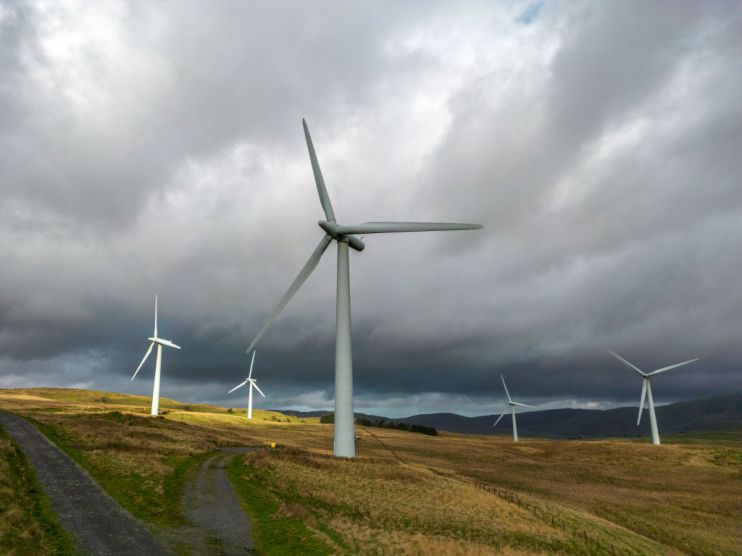UK tax climate putting a block on renewable projects, energy boss warns

The government needs to reduce the tax burden on renewable producers or risk more companies pulling out of projects, warned the boss of a green energy firm which has just halted a major onshore development in the UK.
Rod Wood, managing director of Community Windpower, told City A.M. current levies on renewable producers is a “wall for investment,” and that his company “will not be the last” to exit projects.
“We need to actually incentivise, and start bringing startups and green businesses here. Let’s look at lower taxes, not higher taxes,” he said.
In his view, greener electricity from renewables is vital for both adjacent renewable industries such as battery storage and hydrogen, but also for artificial intelligence and pharmaceuticals.
If the investment conditions were too challenging for businesses, then the UK risks a brain drain of talent to rival markets such as the US and European Union, which have has more robust subsidy arrangements for low carbon energy and technology, he warned.
This includes the introduction of the US Inflation Reduction Act last year, which includes over £300bn in green investment for domestic projects.
Multiple green energy companies have warned the government the lack of competing packages risks projects moving overseas.
Wood said: “All the graduates from the best universities in UK will be looking to work abroad in engineering and finance, because new tech start-ups and the new industries will certainly not be here.”
His comments follow Community’s decision last month to halt investment plans for a proposed major onshore wind farm in Scotland, which would have been the fourth largest in the UK powering 350,000 homes.
The company won its bid for the Sanquhar II project four years ago in a previous allocation round, and finally secured planning permission in August earlier this year.
However, the energy producer halted the project last month, blaming an 80 per cent spike in costs from £300m to £550m driven by inflation and a new tax on renewable generators.
Inflation remains at a stubborn 6.1 per cent, peaking well above 10 per cent earlier this year, putting pressure on renewable generators.
Meanwhile, the Electricity Generator Levy – introduced last November – has imposed a 45 per cent charge on the sale of wholesale electricity from renewable and nuclear producers on companies still operating on legacy contracts rather than under the newer contracts for difference scheme.
The levy on energy players will stay in place until March 2028 – and is in operation as long as receipts are in excess of £75 per megawatt hour – with the current day ahead prices over £90 per MWh.
Wood argued this was a “full blockage” for new projects, and reflected an investment regime that has “no real reflection of what’s happening in global markets.”
Community’s decision comes after Swedish developer Vattenfall suspended a development off the Norfolk coast in July – warning it was no longer viable under amid a 40 per cent spike in costs.
This has only exacerbated growing concerns over the UK’s investment climate, following an underwhelming allocation round for offshore wind projects, where no major bids were secured for new sites.
It also comes after proposed reforms to boost onshore wind developments, with industry bosses warning the plans are insufficient to revive developments after an eight-year de-facto moratorium on projects.
When approached for comment, a government spokesperson said: “The Electricity Generator Levy is a temporary measure in response to unforeseen and exceptional geopolitical events and it will end on 31 March 2028.
“The impact of the levy on generators’ incentive to invest has been mitigated by setting the benchmark price at a level which is high by historic standards. The levy is helping to fund cost of living support for millions of families and businesses.”